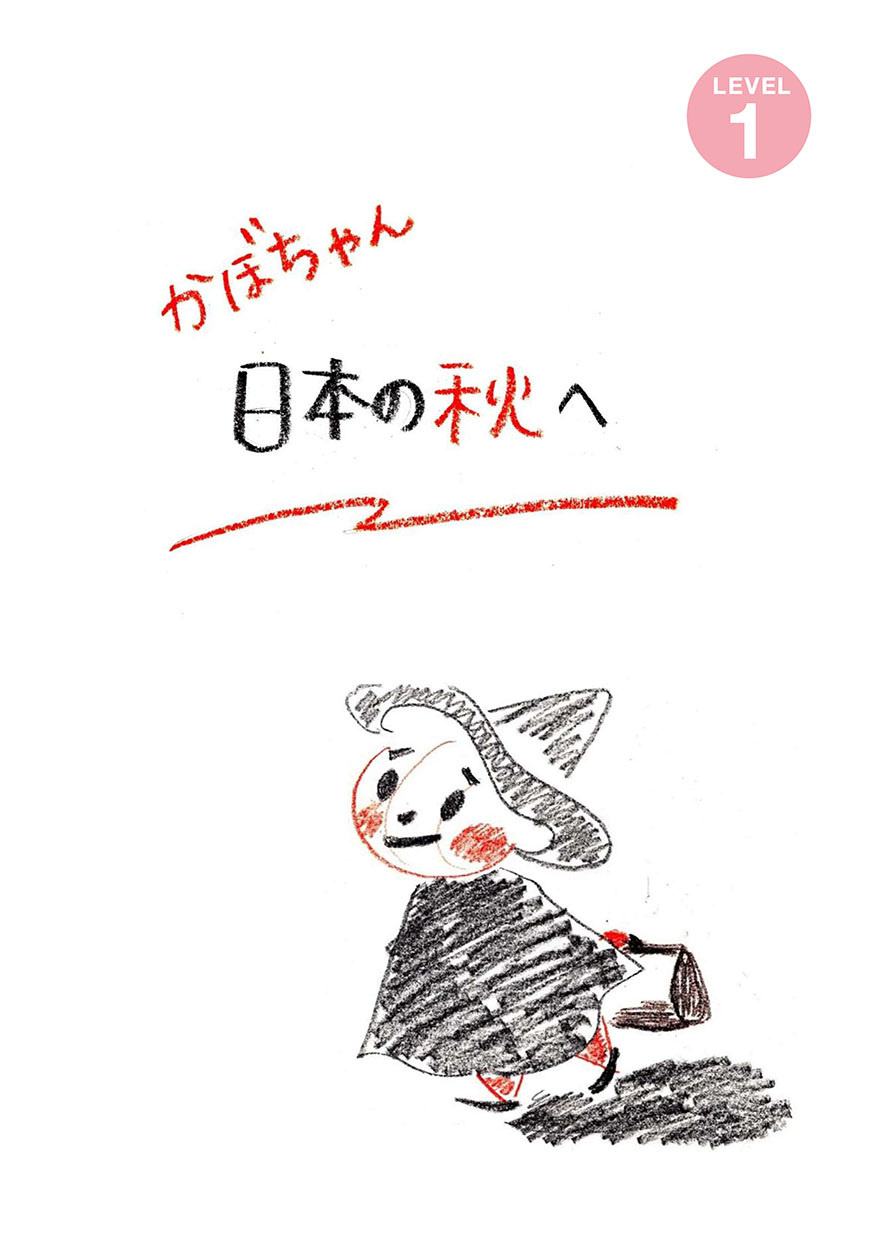Ethnography: かぼちゃん日本の秋へ
I tried a level 1 book this time - https://tadoku.org/japanese/book/4159/ -
 |
かぼちゃん日本の秋へ |
It was a little disturbing how many more words I seemed to not get - and quite a lot of the level 1 books seemed to not have any audio with them, which isn't helpful. Several are books that we are familiar with in English, such as Peter Rabbit & Benjamin Bunny by Beatrix Potter. I chose to do one that I wasn't familiar with, but which had audio. I was lucky that I already knew the word for Autumn in Japanese, or I would have been lost at the outset (although I don't think I had realised that the kanji is tree fire/grain fire, because I had never seen it written that large before (two branch-tree radical, also called grain radical...) & it's amazingly appropriate, as the deciduous tree leaves turn all the colours of flame, and so many grain items turn an orangey brown colour too as they ripen, not to mention all the hips and haws and berries turning red through to purpley-black for some.
I know that leaf peeping/autumn leaf viewing/watching is a big cultural element in Japan, similar in impact to the sakura flower watching parties, but much more solitary/small groups. I assume that the turning of the leaves is tracked in the weather forecasts as the season approaches and as it spreads south from the northernmost islands across the mainland* and down, just like the pinking of the sakura spread is tracked in the opposite direction. It's also a very different feeling - although both have an evanescence to them, and an impermanence, and enjoying this moment because it fades, and so doesn't become ordinary and humdrum and every day, sakura also welcomes spring and warm days and summer and life and winter being over and not having to make every scrap of food last to get through the cold months and the hard times. The autumn leaves speak of the opposite - that the dark, hard days are ahead, and that it is summer that is the passing dream**.
But the book didn't really go into that, just follows the main character, Kapo-chan, around as they experience a Japanese autumn. We see their excitement at seeing red leaves and a shout of ”はっぱがあかい!!きれい~” "red leaf!! Pretty!!" which doesn't really capture the evanescence and cultural aspects, but does capture the leaf viewing and colour changes part ;).
We see some traditional autumn foods back in town, and then learn about the celebrating of Halloween with a Halloween bentou & costumes and parades, and that everyone is cute in their costumes.
Interesting to see the picture for the Halloween parade - we tend to have parades in the US for city founding anniversaries and thanksgiving, and Christmas, but not so much so for Halloween. In the UK, parades are rarer - the town where I grew up had one, which was in the summer and associated with the summer faire, and they had floats which were decorated by various organizations and competed for best float design, and also collected money along the parade route for charity. Very different feel to the US parades that I have seen on tv, or been to at the OP fall festival, where stuff (cheap candy) is given out, and there's marching bands/school dance squads/military/veterans groups involved.
Anyway, my first level one book has been survived, although I need to go look up some of the food words later... ;). Far too appropriately, on Friday, I was asking one of the nijikaiwa group if the Japanese roasted mori like they do in Europe (an autumn/winter treat), and which type of Chestnut tree they have, since the UK has two - horse chestnuts (used or playing conkers with, not for eating) & Sweet Chestnuts, which are the ones that we eat. This was because I found the Japanese children's song, under the spreading chestnut tree on YouTube when I was googling phrases from class.
* The Orkney Islanders also refer to their largest island as the mainland, which is very strange the first time you hear it when you have just come across from Scotland, the real mainland... (although compared to Europe, the UK is still a tiny island too ;)).
** Can you tell that I hate winter and the cold? ;) I also just realised that I am talking a lot about the culture and very little about the book. Oops!


Comments
Post a Comment